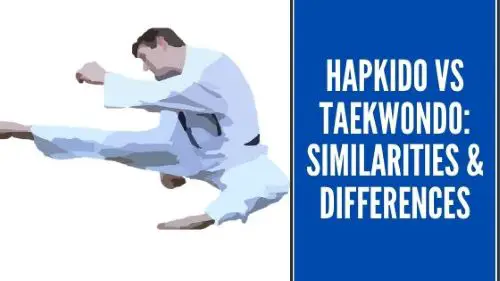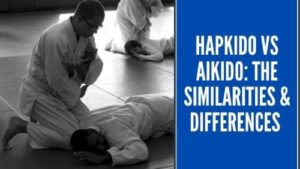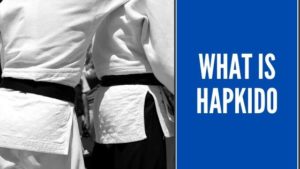The Hapkido and Taekwondo martial arts have origins in Korea, and date to less than 100 years ago. Learning either the hapkido or taekwondo will help you become healthier physically, mentally, and spiritually. This article will look into some of the similarities and differences between these two arts.
Hapkido
Hapkido dates back to the Japanese post-colonial period in Korea. This form of martial art, written as ‘aikido’ in Japanese descent. Due to the dispute between Japanese and Korean, the actual origin lacks clarification. However, the art traces back to a group of Korean nationals, such as Choi-Yong-Sool, who first practiced the art and some of his most prominent students.
The Japanese Aikido and Korean Hapkido share some common origin but have evolved to becoming distinct arts. ‘Hap’ refers to joining or harmony, whereas ‘do’ refers to the art itself.
Most people refer to Hapkido as the way of peace, or the form of coordinating energy. This art incorporates multiple fighting techniques, which include throwing techniques, standing joint locks, pinning, and striking.
Related: The Benefits of Taekwondo
Taekwondo
Tae Kwon Do, as its popularly known, is an art in itself that refers to self-defense and has its origins in Korea. It’s among the world’s oldest forms of martial arts dating back to 2000 years and has become the most practiced art. It merely refers to the three aspects of martial arts: Tae symbolizing Foot, Kwon symbolizing Hand, and Do meaning art. Thus, it can be called a foot and hand art.
Taekwondo is ‘a way of life.’ Most masters teach their students to. Many who practice it, live according to the teachings of the art. Anyone who wishes to learn how to be graceful, improve coordination, and pay attention to detail can master this discipline.
Tae is also mostly taught to many for self-Defense, thus avoiding injuries during mugging or raping.
Related: Basic Rules of Taekwondo to Learn
The Similarities and differences
Both the hapkido and taekwondo have similar teachings or principles which mainly lie in self-defense, respect, and unity. This similarity between these two arts tends to make their fighting styles somehow similar. However, the main differences lie in the arts’ histories, philosophies, and fighting techniques.
Let’s make a comparison between these two arts and get to see some of these similarities and differences.
- Philosophy of Hapkido
There are various forms of hapkido, such as the Japanese aikido, but all follow the same philosophy of Hapkido. This philosophy includes the three fighting principles, which include ‘Hwa,’ ‘won,’ and ‘yu.’
‘Hwa’ means harmony. The hapkido teaches the fighter always to stay calm. While fighting, do not directly impose force on your opponent. However, use that force and re-direct it to the opponent and launch your counter-attack.
Won refers to the circle of principle. This circle guides all the fighting techniques taught in Hapkido. This techniques’ execution is in a natural, free-flowing manner in which you redirect your opponent’s energy.
Yu refers to the water principle, which legendary martial artist Bruce Lee spoke about in many of his teachings. This principle advises one to always flow with the energy around them.
This phenomenon is similar to how water takes up the shape of its surroundings. This principle explains the fighting techniques of re-directing your opponent’s energy.
- Philosophy of Taekwondo
The philosophy of taekwondo revolves not only on the fighting techniques but also on molding better character. When learning the taekwondo techniques and proceeding to achieve a black belt, taekwondo teaches a person the qualities of improving one’s personality.
Grandmaster James S. Benko highlights that taekwondo teaches qualities such as self-control, humility, perseverance, etc. As you learn to become more conscious, you strive to do right and live peacefully.
- Hapkido Vs. Taekwondo Fighting Styles
Hapkido is a hybrid martial arts that incorporated various fighting techniques from other arts to form it. Some of the multiple forms of hapkido include Combat Hapkido, Shinsei Hapkido, Jin Jung Quan hapkido, and Sin Moo Hapkido. Note that all these forms follow the same philosophy of Hapkido.
All forms of taekwondo incorporate almost similar fighting techniques. The style varies across different taekwondo federations, due to the various competitions.
For instance, those taekwondo schools under the World Taekwondo mainly teach the fighting style practiced at the Olympics.
- Taekwondo Vs. Hapkido Fighting techniques
Taekwondo mainly focuses on your stance, speed, and precision with which you execute your moves.
Taekwondo students practice throwing various punches and kicks at all angles. Jumping and spinning are some additional techniques practiced to enhance speed and energy.
Hapkido mainly involves counter-attack moves. Students learn to observe the movements of their opponents.
This art also includes grappling and striking. A hapkido trainee aims at bringing their opponent to the ground by locking or other techniques.
- Weapons in Taekwondo Vs. Hapkido
Taekwondo does not involve weapons in its curriculum. However, if the instructor studied some weapon-fighting techniques, he might teach his students.
In Hapkido, students practice weapon-fighting techniques. To advance your belt category, you need to show that you can defend yourself against various weapon attacks, such as guns, knife, baton, etc.
This fighting skill is essential since it prepares the student’s self-defense, in real-life situations, against any form of attack.
- Similarity in Competitions
Competitions for both arts are quite similar. The competitors fight on an 8*8 sized mat, having a referee and judges who award points. Hapkido is similar to judo since it allows for throws and joint locks.
- Federations and Associations in Taekwondo vs. Hapkido
World Taekwondo, International Taekwondo Federation, and American Taekwondo Association are some of the federations governing Taekwondo worldwide.
World Kido Federation, Korean Hapkido Federation, and Global Hapkido Association govern the Hapkido martial arts technique. These governing bodies set their teaching curriculum and arrange various fighting competitions.
In conclusion, Hapkido and Taekwondo strike in similarity since they have similar origins. Both martial arts complement each other in that Taekwondo is mainly uses for range-fighting, whereas Hapkido is highly-effective during close combat.
A martial artist can incorporate the speed and precision techniques in Taekwondo and counter attacks in hapkido for optimum self-defense. Learning martial arts also builds character and health.







